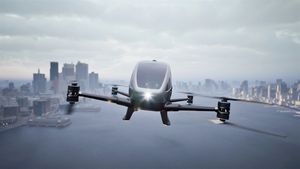Modern Vision Solutions has released a new educational article, "Can You Wear Contacts for Farsightedness?", aimed at helping patients and healthcare journalists understand the practical options available for correcting hyperopia. The article delivers a thorough explanation of how contact lenses can be used to manage farsightedness, offering insights into the various lens types, how they work, and how patients—both adults and children—can benefit from customized vision correction plans. As hyperopia continues to affect a significant portion of the population, this resource is designed to help people make informed choices about their eye health and comfort.
Farsightedness, or hyperopia, is one of the most common refractive errors and causes nearby objects to appear blurry while distant objects remain clearer. The condition stems from a structural issue in the human eye, typically when the eyeball is too short or the cornea too flat, causing incoming light to focus behind the retina. This misalignment leads to blurred near vision, which can interfere with everyday activities like reading, working at a computer, or using a smartphone. According to the article, contact lenses are a proven method for correcting this issue by adjusting the path of light so that it lands precisely on the retina, improving visual perception and reducing eye strain.
The article emphasizes that contact lenses are a safe and effective option for patients with farsightedness. At Modern Vision Solutions, a comprehensive eye examination allows the optometry and ophthalmology team to assess each patient’s individual needs, including prescription strength, eye shape, lifestyle demands, and any coexisting conditions such as astigmatism or presbyopia. For mild to moderate hyperopia, soft spherical contact lenses are often recommended due to their comfort and flexibility. For patients with higher prescriptions or irregular eye shapes, rigid gas permeable lenses or hybrid lenses may offer superior clarity. The team also provides multifocal or bifocal lenses for those managing age-related vision changes.
A key takeaway from the article is that contact lenses may offer several advantages over glasses for people with hyperopia. Because contact lenses rest directly on the surface of the eye, they move with the eye and allow for a wider, more natural field of vision. In contrast, glasses can limit peripheral vision and cause visual distortion, particularly in patients with high prescriptions. For those who lead active lifestyles or participate in sports, contact lenses often provide greater convenience and stability. The article cautions, however, that successful contact lens use requires proper hygiene, routine cleaning, and adherence to a replacement schedule to minimize risks like corneal irritation or infection.
The article also explores the question of whether children with farsightedness can safely wear contact lenses. While glasses are typically the first treatment choice for younger patients, contact lenses may be a practical alternative in specific cases, particularly for children involved in sports or activities that demand clear near vision. The pediatric optometry team at Modern Vision Solutions carefully evaluates each child’s readiness, maturity level, and overall eye health before recommending contacts. Regular monitoring ensures lenses remain properly fitted as the child’s eyes grow and visual demands evolve.
The role of corneal topography is another focal point in the article. This diagnostic tool maps the surface of the cornea and helps guide the fitting process for patients with unique corneal shapes or higher degrees of farsightedness. Corneal topography allows for precise lens selection, improving not only the fit and comfort of the lens but also the overall visual acuity and long-term stability of vision correction. With this detailed data, the Modern Vision Solutions team is able to tailor each lens recommendation to the patient's unique anatomy, maximizing outcomes and patient satisfaction.
For patients exploring longer-term solutions or those who find contact lenses inconvenient, the article points out that contact lenses can also be used as part of a broader treatment strategy that may include vision therapy or even surgical options like LASIK or Refractive Lens Exchange (RLE). While not everyone qualifies for surgery, particularly individuals with thin corneas or certain health concerns, Modern Vision Solutions provides personalized evaluations to help determine the best path forward. In every case, the practice is committed to enhancing both visual acuity and daily comfort.
The article concludes by encouraging readers to schedule an eye exam if they are experiencing blurred vision, headaches, or other signs and symptoms associated with hyperopia. With access to advanced diagnostic technology and a full range of corrective lenses, Modern Vision Solutions ensures that each patient receives a custom solution that addresses their needs and supports long-term eye health. The practice continues to serve as a trusted resource in the community, offering the latest in vision correction strategies while prioritizing patient education and transparency.
Reporters interested in learning more about contact lenses for farsightedness or the broader landscape of non-surgical and surgical vision correction options are encouraged to reach out for expert commentary from the doctors at Modern Vision Solutions. As the demand for personalized eye care grows, the team remains focused on helping patients see clearly, live comfortably, and make informed decisions about their treatment. To read the full article, "Can You Wear Contacts for Farsightedness?", visit the Modern Vision Solutions website.
###
For more information about Modern Vision Solutions - West Des Moines, contact the company here:
Modern Vision Solutions - West Des Moines
Jordan Maddex-Kopp
515-672-2020
hello@mvsvision.com
Modern Vision Solutions
6880 EP True Pkwy Suite 109
West Des Moines, IA 50266





